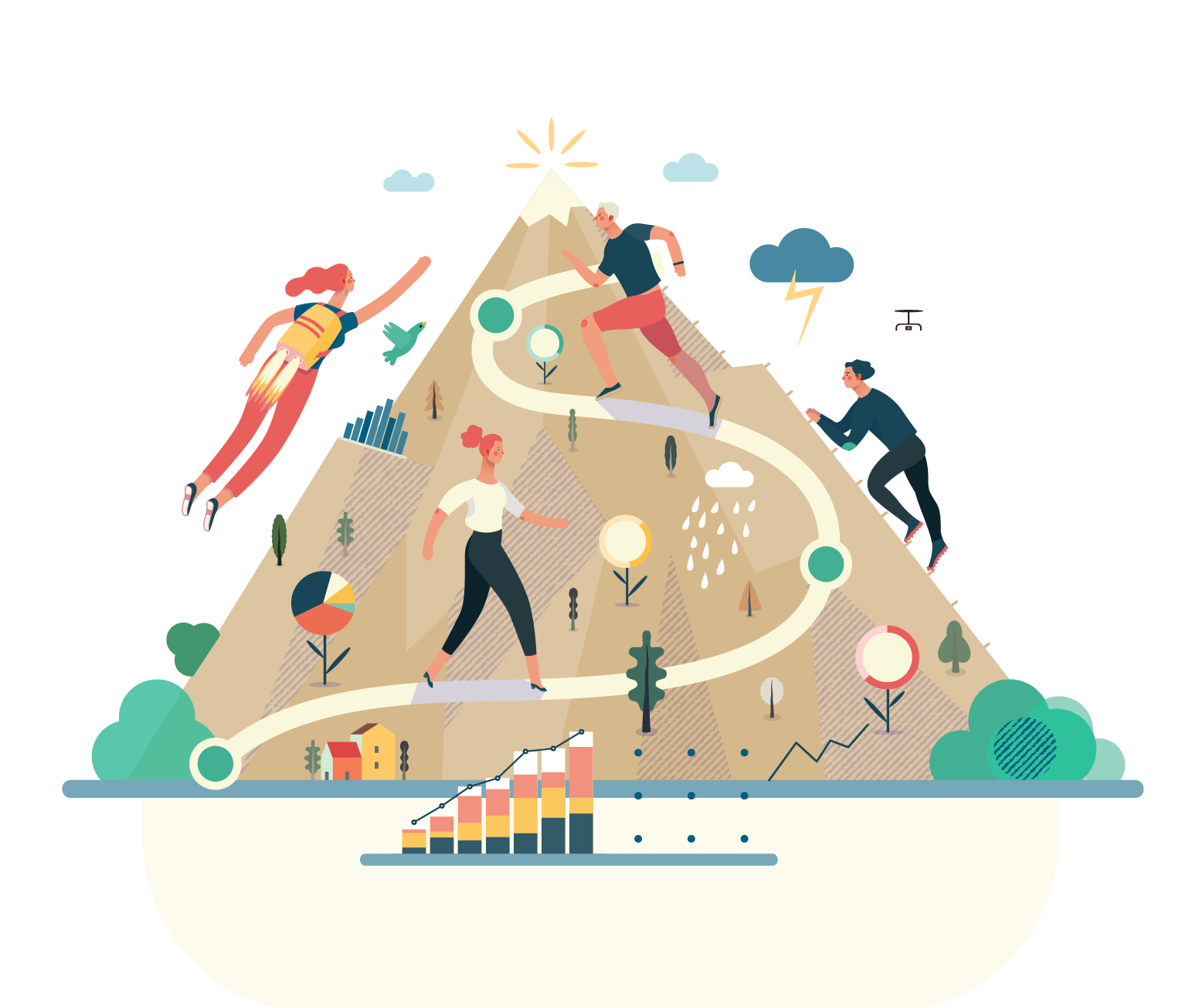
Current remote working conditions has got me thinking about past initiatives and aspects of the direction setting, communications and the change journey. There can often be a lack of clarity around the business transformation, the pace, the direction of travel, the best order along with various key stakeholder mindsets not necessarily being in the right place to support successful transformation.
Many of us have led or worked on several initiatives in which due to the global nature of the organisation, size, complexity and change impacting a large number of people, getting the organisation on the same page and working together in the same direction can be a massive challenge.
Other than strong leadership and so forth the obvious toolset for this challenge is a clearly defined and bold vision statement aligned to business strategy, with a well-defined business case with a clear value proposition, ideally defined through a value dependency network map with good reliable coverage of value across three key pillars that cover most stakeholder groups, e.g.;
- Serving Customers Best – Customer centricity is at the heart of the transformation.
- Engaged Employees – value to support knowledge workers in an involved, effective and safe work environment
- Increase Efficiency – benefits to all stakeholders, including non-financial efficiencies.
Not to forget, a roadmap supported by detailed plans and strong organisational change management capabilities. All sounds great – right!
I believe all these and more are necessary for success. Still, I keep coming back to the past success I have seen in clarifying the general direction for change, in motivating people to take action in the right direction, and the alignment and coordination of efforts of different people, many people, and from various stakeholder groups, who may be remotely dispersed across the enterprise, often globally.
In my experience, one of the critical tools of success here has been the development and utilisation of a rich picture or a route learning map as we called it in a significant global business transformation.
What do I mean by rich picture or learning maps? You may have seen or used them in past initiatives; they are a single all-encompassing and highly creative visual that tells the story of the transformation, past, present and future in a memorable, intellectually accessible and timeless manner.
Examples I have used and seen are;
- A picture-based workflow of the handoff between departments or divisions of a large organisation, demonstrating product and information flow, or breaking down the silos!
- A rocky valley with a bridge (labelled ERP) over a grand canyon in the road, leading into a green and pleasant land with a beautiful sunrise, and before the bridge symbols of competitors racing ahead and minefields in the way.

Hopefully, you are getting the idea of what I mean!
The Learning Map or Rich Picture is the central component in engaging with staff around the transformation, with conversations and discussions built around the map taking place in every part of the initiative across the organisation.
They should answer the fundamental questions of:
- Why is the transformation needed?
- Where have we come from?
- Where are we trying to get to?
- What challenges can we expect to face along the way?
- What is expected of me?
Most importantly, the Learning Map will tie together the various strands of a transformation, joining the dots between major initiatives like projects for new IT systems and the new organisational design to enable the desired outcomes, and setting these within context. They don’t need to have all the details, but be rich in the vision, why, where and what. The details can be described at the correct and relevant time.
They should be developed to be;
- Visual and easily used to assist in telling a story – people learn best from seeing pictures and hearing stories.
- Accessible – for everyone in the workforce, and an excellent aid for less confident presenters.
- Discussion-based – is the key to engagement and buy-in. In one enormous business transformation, we created two poster-sized pictures and a set of cards to be placed on the images if laid out on a table. We took all staff through a facilitated process, almost like a board game to guess where vital information such as requirements, expected outcomes and KPIs are correctly placed.
- Flexible – long-lasting and adaptable for lots of different uses, for broader communications than those working directly on the initiative.
- Pivotal – the centrepiece for ongoing engagement activities and referred to often.
The results and support on the change journey using this tool has always been excellent. They have been the most powerful tool at our disposal to persuade people of the need for change and to get them to understand why it’s so vital – Creating conversations across the organisation in every site and across all levels. They allow people to be actively engaged in discussions about strategy, culture and values, not just passively listening. Creating the alignment of people across the company with one picture and allow them to share a similar experience. If used well, managers are listening to employees, not talking at them.
Early Warnings – On two initiatives at different companies, one a substantial business transformation and the other a much smaller change project, I have experienced challenges at the executive level in agreeing to this form of communication. In both cases, it became apparent that there were critical stakeholders in the executive who were not on board with either the direction of travel or saw the project as just an IT project rather than the business change project it needed to be. They were fine with the business cases that explained the vision and change or transformation required for success in writing – Already, without a developed learning map this technique had become useful in stakeholder, risk and issue management!
I have found that in the continuous utilisation of organisational change management methods and communications, both internally and externally bringing the vision and transformational roadmap to life using techniques such as route learning maps, visuals and facilitated exercises extremely powerful. In my experience, digital business transformation involves leading people, process, technology and data, with by far, the bulk of challenge being about people and culture.
